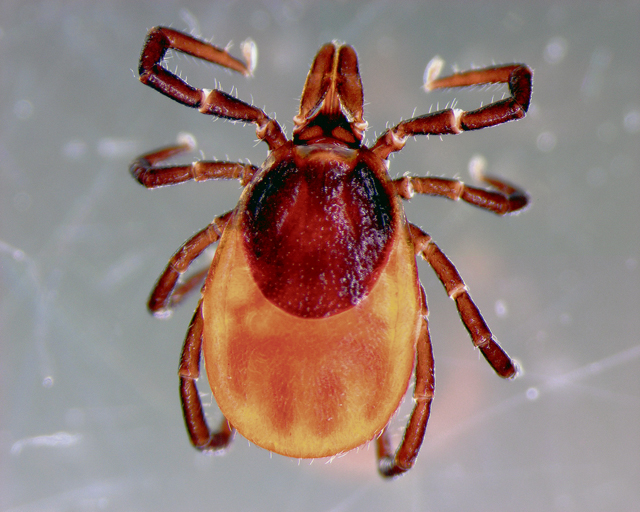
While exposure to ticks is more common during the warm summer months, contact can occur throughout the year. People who work or spend time in the woods, such as farmers, hunters, and people who visit these areas for recreation, are at the highest risk of infection.
According to Public Health officials, the overall prevalence of tick-borne infections is increasing globally. This is due, in part, to the expansion of tick populations into new geographic regions and increased human exposure because of environmental and climatic changes.
“The threat of tick-borne disease throughout Europe is different depending on where in Europe you’re located,” said U.S. Army Capt. Michael Dunbar, an entomologist assigned to Public Health Command Europe. “For example, Lyme disease is present throughout Europe while tick-borne encephalitis is mainly present in Eastern Europe and the Baltic states. However, both Lyme disease and TBE are considered a low threat in Europe, especially if people take precautionary measures and seek vaccination. TBE is not currently found in the United States.”
According to medical officials, there are several simple steps, or precautionary measures, people can take to protect themselves against tick bites and possible infection.
“The simplest and easiest way to reduce contact with ticks is to avoid areas where ticks may be present,” added Dunbar. “Those areas include tall grasses, deer trails, and wooded areas. You should also wear long sleeves and long pants. If you’re moving through areas where you suspect there are ticks, tuck your pants into your socks. For military servicemembers, proper wearing of insecticide-treated uniforms will help. Finally, check yourself, others, and pets for ticks when returning from outside. Clothes can be placed in a dryer on high temperature for 20 minutes to kill any ticks that may be hiding on your clothes.”
According to medical professionals, if you’ve been bitten by a tick, there are simple, yet effective, measures to safely remove the tick from your skin.
“If you have a tick on you, don’t panic,” added Dunbar. “Simply remove the tick using a pair of fine tipped tweezers and grasp the tick as close to the skin’s surface as possible. Pull upward with steady, even pressure. Do not twist or jerk the tick as this can cause mouthparts to break off and remain in the skin. After removing the tick, clean the bite area and wash your hands with rubbing alcohol or soap and water.”
According to Public Health Officials, ticks can spread bacteria, viruses and parasites that cause human diseases. Among them are tick-borne encephalitis and Lyme disease. While there are vaccinations that can protect against TBE, there is currently no vaccination against Lyme disease.
“The only available preemptive vaccination for a tick-borne disease is against TBE,” Dunbar added. “The TBE vaccination (TICOVAC) is given in a three-dose series and should be taken before exposure to ticks. Individuals who are interested in receiving the TBE vaccine should consult their primary care provider. Unfortunately, there is no vaccination protecting against Lyme disease. The good news is Lyme disease can be treated post exposure with antibiotics.”
For more information on ticks, tickborne illnesses, and vaccinations, individuals should consult their primary care provider or healthcare team.


